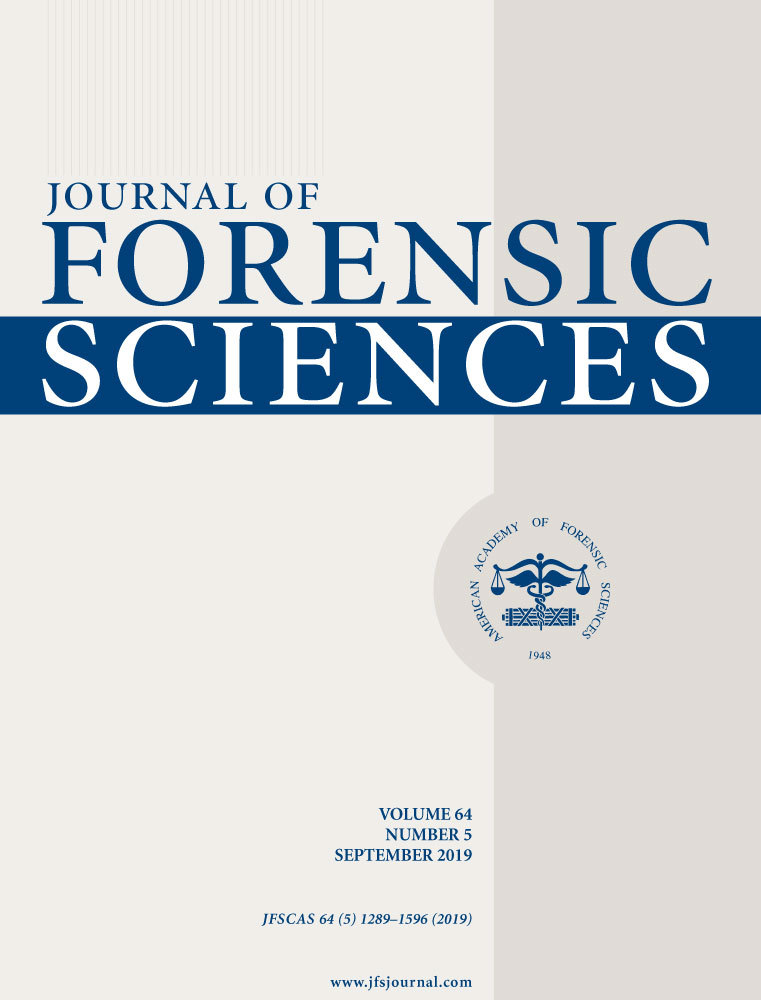Fluorescence of 1,2-Indanedione with Amino Acids Present in the Fingerprint Residue: Application in Gender Determination†
Abstract
1,2-indanedione is used for latent fingerprint visualization on porous surfaces. In this paper, fluorescence spectra of 1,2-indanedione after reacting with 21 individual amino acids present in latent fingerprints residue were measured in water-methanol solutions. The fluorescence intensity depends on the amino acid used, while the fluorescence peak does not change much. The concentration of amino acids in fingerprint residue in females is almost the double of their concentration in males. This property combined with fluorescence of 1,2-indanedione-amino acids compounds is used for gender determination, by comparing the fluorescence intensity peaks in the same experimental conditions. In this preliminary study, the fluorescence signal from the samples representing females was almost two times the signal for samples representing males. In addition to the reduction by almost 50% of the number of suspects in a criminal research case, these results could be helpful in gaining some knowledge about the papillary residue composition.




